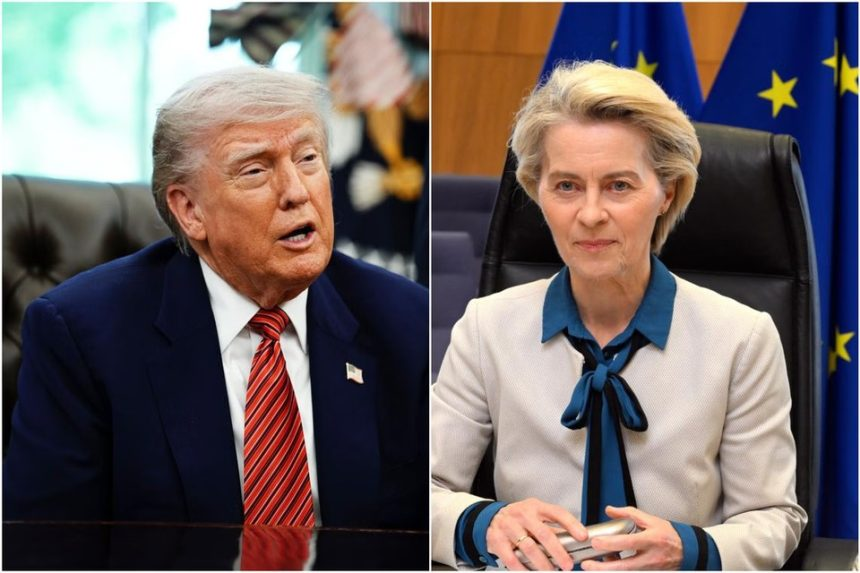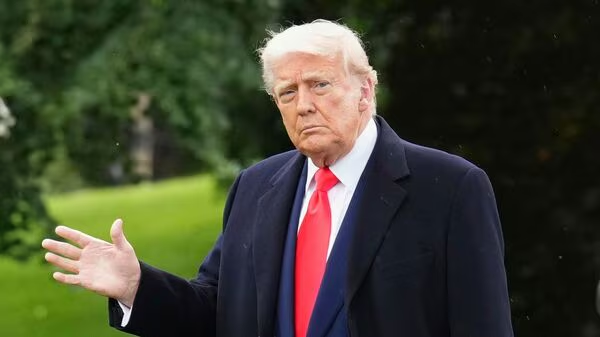In a surprising turn of events, President Donald Trump announced on Sunday that he would postpone the implementation of a proposed 50% tariff on European Union imports until July 9, 2025. The decision came after a productive phone call with European Commission President Ursula von der Leyen, signaling a potential thaw in the ongoing trade tensions between the U.S. and the EU. This move has sparked cautious optimism among global markets and policymakers, though uncertainty remains about whether a lasting trade deal can be reached.

A Sudden Shift in Trade Policy
Just days before the announcement, Trump had taken a hardline stance, threatening to impose the hefty 50% tariffs on EU goods starting June 1. In a post on his Truth Social platform, he expressed frustration with the slow pace of trade negotiations, accusing the EU of being “very difficult to deal with” and claiming that talks were “going nowhere.” The proposed tariffs would have significantly escalated existing levies, which include a 25% tariff on EU steel, aluminum, and cars, as well as a 10% “reciprocal” tariff on most other goods.
The threat sent ripples through global financial markets, with European stock indexes like the STOXX 600 dropping 0.9% on Friday and the U.S. dollar weakening. Businesses on both sides of the Atlantic braced for potential disruptions, as the tariffs would have increased costs for everything from German cars to Italian olive oil and French luxury goods. However, the weekend call with von der Leyen appears to have shifted Trump’s approach, at least temporarily.
The Trump-Von der Leyen Call: A Step Toward Negotiation
Speaking to reporters at Morristown Municipal Airport in New Jersey, Trump described the conversation with von der Leyen as “very nice” and said she had requested an extension to the June 1 deadline to allow for “serious negotiations.” He agreed to push the tariff implementation to July 9, a date that aligns with the original 90-day window set in April for trade talks. “She said we will rapidly get together and see if we can work something out,” Trump told reporters, adding in a Truth Social post, “I agreed to the extension — July 9, 2025 — It was my privilege to do so.”
Von der Leyen echoed the positive tone, posting on X that the call was “good” and emphasizing the deep trade ties between the U.S. and EU. “The EU and US share the world’s most consequential and close trade relationship,” she wrote. “Europe is ready to advance talks swiftly and decisively. To reach a good deal, we would need the time until July 9.” The European Commission’s chief spokesperson, Paula Pinho, later noted that the call had injected “new impetus” into negotiations, with trade representatives from both sides scheduled to meet soon.

Why the Delay Matters
The decision to delay the tariffs offers a critical window for negotiators to address longstanding trade disputes. The U.S. has maintained a trade deficit with the EU, which Trump cited as exceeding $250 billion annually, blaming EU trade barriers, VAT taxes, and regulations. The EU, meanwhile, has pushed for a balanced agreement that benefits both sides, resisting U.S. demands for unilateral concessions. The bloc has also threatened retaliatory tariffs on up to €116 billion of U.S. exports, including cars, aircraft, and agricultural goods, though these measures have been paused to facilitate talks.
European leaders have welcomed the delay but remain cautious. French President Emmanuel Macron expressed hope for “the lowest possible tariffs” to foster fruitful exchanges, while Germany’s Finance Minister Lars Klingbeil called for “serious negotiations” without further provocations. Irish Taoiseach Micheal Martin praised the EU’s measured response, noting that tariffs harm consumers and the global economy. The EU’s trade commissioner, Maros Sefcovic, reaffirmed the bloc’s commitment to a deal based on “mutual respect,” signaling a desire to avoid escalation.
Markets responded positively to the news, with European stocks rebounding on Monday and the euro hitting a one-month high against the dollar. The STOXX 600 index rose 1%, and sectors like automobiles and luxury goods saw gains, reflecting relief among investors. However, analysts warn that the reprieve may be temporary. “The EU-U.S. trade dance is a high-stakes tango, with July 9 as the next flashpoint,” said market analyst Hussein Aslam in a CNBC interview. He cautioned that Trump’s unpredictable approach could lead to renewed tensions if negotiations falter.
The Bigger Picture: U.S.-EU Trade Relations
The U.S. and EU share the world’s largest trade relationship, with billions of dollars in goods and services exchanged annually. However, tensions have simmered for years, particularly over issues like agricultural subsidies, digital taxes, and market access. Trump’s tariff threats are part of a broader “America First” trade policy that has also targeted China, Canada, and Mexico. In April, he imposed a 20% reciprocal tariff on EU goods, later reduced to 10%, and introduced a universal 10% tariff on all imports, which remains in place.
The EU has responded strategically, suspending its own retaliatory tariffs on €21 billion of U.S. goods and exploring further measures targeting €95 billion in American exports. Von der Leyen has also floated the idea of a zero-tariff agreement for cars and industrial goods, a proposal supported by figures like Elon Musk. However, analysts like Guntram Wolff from Bruegel argue that uncertainty persists due to unclear U.S. demands. “It’s very unclear what exactly the U.S. President wants,” Wolff told CNBC, highlighting the challenges of negotiating with an administration known for its erratic trade policies.
For American businesses and consumers, the delay offers temporary relief. Tariffs often lead to higher prices, as seen in sectors like automotive and agriculture, where companies pass on increased costs. A small business owner in a recent CNN segment noted that tariffs could jeopardize operations, stating, “It’s not about patriotism, it’s about math.” The coming weeks will be critical as both sides work to bridge their differences before the July 9 deadline.

What’s Next for U.S.-EU Trade Talks?
With negotiations set to intensify, both the U.S. and EU face pressure to deliver a deal that balances economic interests with political realities. Trump’s decision to delay the tariffs suggests a willingness to engage, but his history of reversing course keeps negotiators on edge. The EU, bolstered by its economic weight, is unlikely to yield to one-sided demands, as noted by Commerzbank’s Michael Pfister, who suggested a potential compromise around a 10% tariff rate with minimal EU retaliation.
As the July 9 deadline approaches, businesses, investors, and policymakers will closely watch the talks. A successful agreement could stabilize transatlantic trade and boost economic confidence, while a failure could reignite a trade war with far-reaching consequences. For now, the delay offers hope, but as Aslam aptly put it, “Buckle up; this ride’s far from over.”
Read more about the tariff delay on CNBC
Reuters: European markets rally after tariff delay
The New York Times: Can the EU make a deal?
Read More :- Social Media Platforms Test New Ad Formats, Prioritizing Short-Form Video Content in the USA






